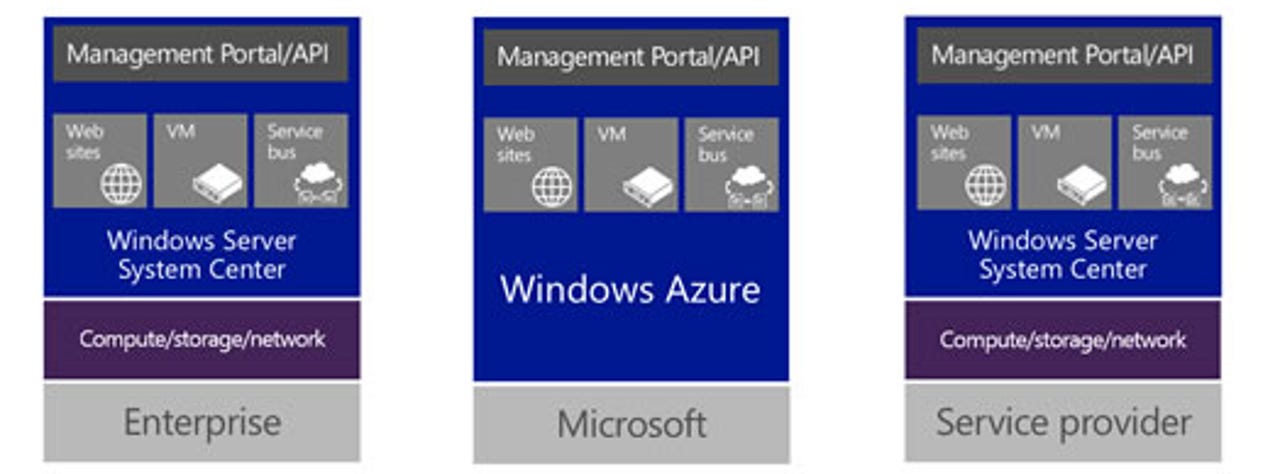Microsoft finds a new way to deliver a private cloud in a box

It took three years from when it was first announced, but Microsoft may have found a way to deliver a private cloud in a box.

The company's vision and strategy for doing this has gone through many twists and turns.
Microsoft's original plan was to provide its largest partners and even a few, select enterprise users a so-called Azure Appliance. Announced in 2010, the Azure Appliances were to be carried by Dell, Fujitsu and HP. These OEMs were to provide the servers which could be installed in partner and select enterprise customers' datacenters. Microsoft was supposed to provide and maintain Windows Azure as a service to these servers.
The only partner that ever delivered an Azure Appliance was Fujitsu, which announced availability in August 2011. But some time in the past few months, Microsoft ended up dropping its Azure Appliance plans, without ever officially announcing it was dead.
On June 3 at its TechEd conference, Microsoft officials announced a new product called Windows Azure Pack. For all intents and purposes, as cloud expert Roger Jennings said to me via Twitter today, the Azure Pack delivers what Microsoft promised with the Azure Appliance.
Microsoft's own Web site description of the new Azure Pack basically corroborates this. "The Windows Azure Pack delivers Windows Azure technologies for you to run inside your datacenter, enabling you to offer rich, self-service, multi-tenant services that are consistent with Windows Azure," the introduction notes.
As Microsoft itself explains in its free, downloadable white paper on Windows Azure Pack (thanks for the link @ehorley), the Windows Azure Pack is a superset of the horribly named "Windows Azure Services for Windows Server" technology, which Microsoft announced back in July 2012, and which it made generally available in January 2013.
Windows Azure Services for Windows Server is a set of select features that originally debuted as part of Windows Azure which Microsoft made available to its service providers. The core set of technologies in this were hosted Linux and Windows Server virtual machines; support for high-density Web sites (the complement of Windows Azure Web Sites, codenamed "Antares"); Service Management Portal; and a Service Management application programming interface (codenamed Katal).
The components in the Azure Pack include a management portal; service management programming interface; a Web sites service; a virtual machines service; and service bus support.